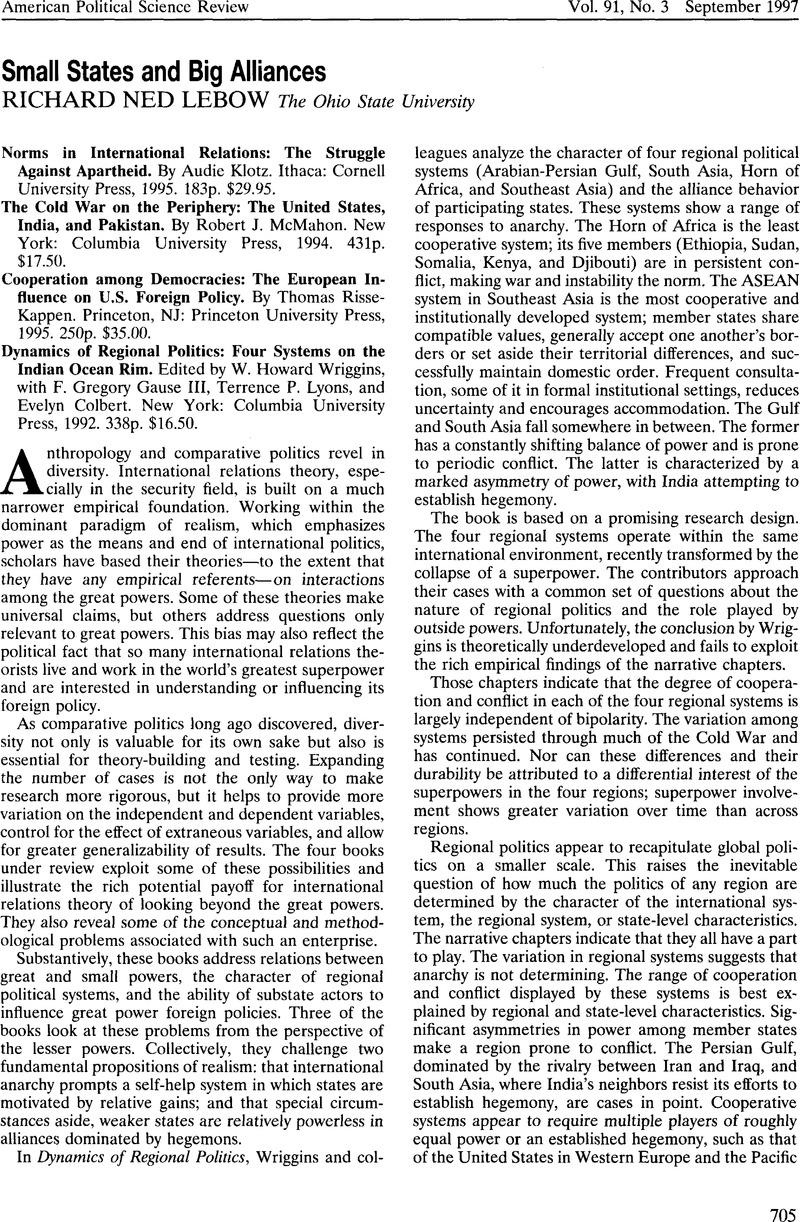Crossref Citations
This article has been cited by the following publications. This list is generated based on data provided by Crossref.
Shin, Gi-Wook
Izatt, Hilary
and
Moon, Rennie J.
2016.
Asymmetry of power and attention in alliance politics: the US–Republic of Korea case.
Australian Journal of International Affairs,
Vol. 70,
Issue. 3,
p.
235.
ATABAY, Feyza Nur
2020.
Küçük Devlet Neden Süper Güç İttifakından Ayrılır? Soğuk Savaş Dönemi Irak, Mısır ve İran Örnekleri.
Türkiye Ortadoğu Çalışmaları Dergisi,
Vol. 7,
Issue. 2,
p.
61.






Comments
No Comments have been published for this article.